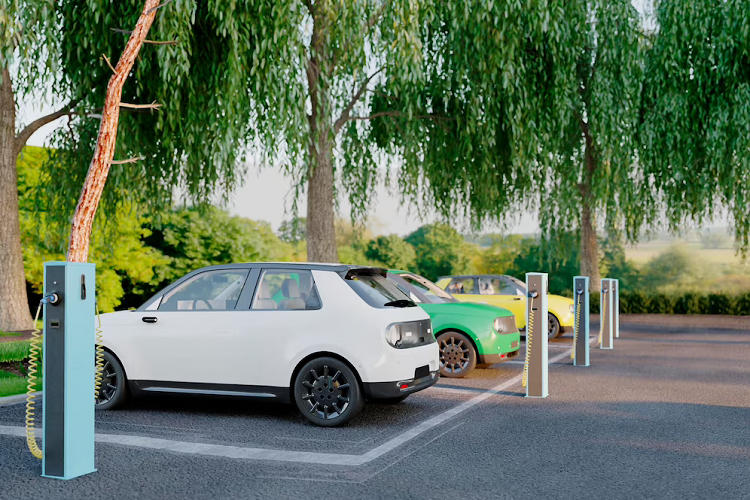Urban living is filled with many benefits, but some pitfalls as well. The call for greener, more sustainable cities is growing louder. As the world grapples with the challenges posed by climate change and pollution, the role of quick charge stations in transitioning to greener cities has gained significant importance. These charging stations aren’t just futuristic concepts; they are the backbone of a cleaner urban environment. In this blog, we’ll explore the pivotal role of quick charge stations and explore how they are shaping the cities of tomorrow.

Enable Electric Mobility
Electric vehicles (EVs) have emerged as an opportunity to fight against air pollution and greenhouse gas emissions that plague cities. Quick charge stations are one of the key features in this electric mobility revolution. With their ability to rapidly recharge EVs, they address one of the primary concerns that deter potential EV buyers: charging time. These stations are no longer limited to futuristic prototypes; they are increasingly becoming a common sight in parking lots, along highways, and in urban centers.
In addition to reducing emissions, EVs offer a quieter and smoother ride, further enhancing the quality of urban life. By facilitating the adoption of electric mobility, quick charge stations are steering cities toward a future where clean transportation is the norm rather than the exception.
Revolutionize Urban Infrastructure
Modern cities are built on mobility, and transportation is the lifeline that connects various facets of urban life. Quick charge stations are an integral part of this urban ecosystem. They are transforming the very fabric of urban infrastructure, necessitating changes in how we plan, design, and navigate our cities.
Take, for instance, the incorporation of these stations into parking facilities. As EV ownership rises, parking structures are being equipped with quick charge stations, morphing into hubs of sustainability. This shift has the potential to drastically reduce the carbon footprint of urban commuting. It’s not just about charging vehicles; it’s about revolutionizing the concept of what a parking facility can be—an active contributor to a greener city.
More Quick Charge Stations Means Less Range Anxiety
One of the most significant hurdles in widespread EV adoption has been the fear of running out of battery while on the road. Quick charge stations are rewriting this narrative because they offer a solution that wasn’t available in the past. Unlike conventional charging stations that could take hours to provide a full charge, quick charge stations can juice up an EV’s battery to a respectable range, sometimes 80% or more in a matter of minutes.
This paradigm shift is recalibrating the way urban dwellers think about their EVs. No longer do they need to meticulously plan routes around charging stops. With quick charge stations scattered strategically across the city, the fear of being stranded with a dead battery is rapidly becoming a thing of the past.
The DC Charging Stations
Within the realm of quick charge stations, DC charging stations deserve special mention. These stations are the superheroes of the EV charging world, capable of delivering a substantial charge in lightning-fast time. How do they achieve this feat? Unlike AC (Alternating Current) charging, which is commonly used in households, DC charging directly pumps high-voltage electricity into the vehicle’s battery, bypassing the need for an internal converter.
DC charging stations are particularly well-suited for highway rest stops and urban centers where time is of the essence. They offer a tremendous advantage to long-distance travelers and busy commuters, enabling them to recharge and hit the road in a fraction of the time it would take with other charging methods.
Other methods of EV charging are Level 2 charging stations. These devices are a grate alternative to DC charging stations and can be plugged into an outlet or have their own station. They provide a high rate AC electric current and charge your battery at a safer pace, protecting its internal structure and prolonging its lifespan.
Improved Collaboration
The journey toward greener cities requires a collective effort. Quick charge stations are a prime example of successful collaboration between the public and private sectors. Governments, recognizing the environmental and health benefits of EVs, are incentivizing the installation of charging infrastructure at private businesses and in public spaces. Simultaneously, private companies are stepping up to the plate, investing in charging networks and technology development to release these stations into more cities.
This synergy is creating a robust charging network that caters to diverse urban needs. It’s not just about numbers, it’s about the accessibility and convenience of charging options for EV drivers. Whether you’re a city dweller without a private charging point or a business owner looking to embrace sustainability, collaborative efforts are resulting in a win-win situation for all stakeholders.
Challenges to Increased Adoption
While the rapid creation of quick charge stations is undeniably promising, challenges still linger on the horizon. One pressing concern is the need for standardized charging infrastructure. The availability of various charging connectors and standards can be confusing for EV owners and hinder seamless charging experiences. A concerted push toward a universal charging standard is crucial to ensuring that quick charge stations are universally accessible in cities around the world.
Additionally, as the number of EVs on the road continues to rise, load management and grid capacity become critical considerations. The surge in demand for electricity during peak charging times could strain the power grid if not managed effectively. Innovations in smart charging and energy storage solutions will play a pivotal role in mitigating these challenges.


